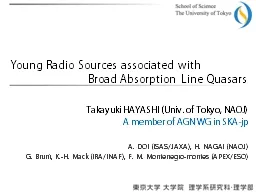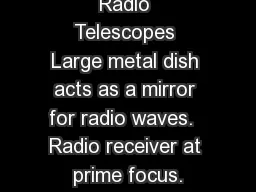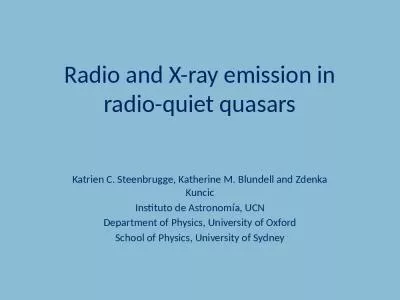PPT-Young Radio
Author : alida-meadow | Published Date : 2016-06-26
S ources associated with Broad Absorption Line Q uasars Takayuki HAYASHI Univ of Tokyo NAOJ A member of AGN WG in SKA jp A DOI ISASJAXA H NAGAI NAOJ G Bruni
Presentation Embed Code
Download Presentation
Download Presentation The PPT/PDF document "Young Radio" is the property of its rightful owner. Permission is granted to download and print the materials on this website for personal, non-commercial use only, and to display it on your personal computer provided you do not modify the materials and that you retain all copyright notices contained in the materials. By downloading content from our website, you accept the terms of this agreement.
Young Radio: Transcript
Download Rules Of Document
"Young Radio"The content belongs to its owner. You may download and print it for personal use, without modification, and keep all copyright notices. By downloading, you agree to these terms.
Related Documents














